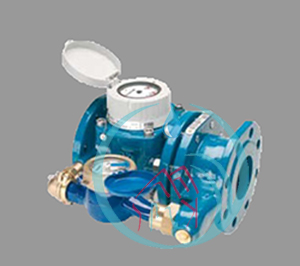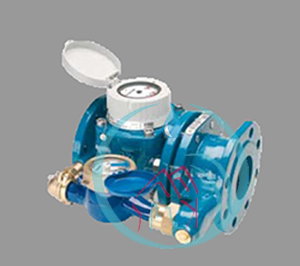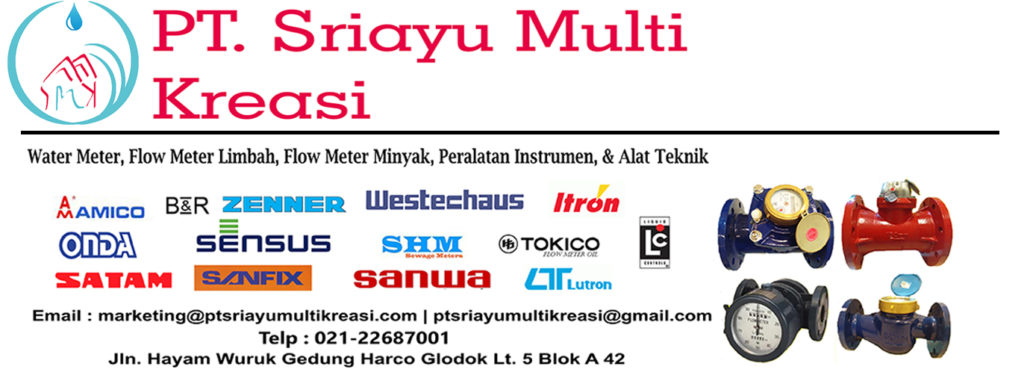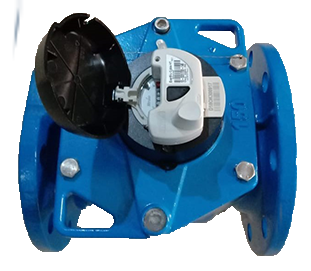
Water Meter Zenner WPV can be used for flow rates higher than Qn 15 m³/h. They are thereby distinguished by ensuring an especially low head loss, even with high flow rates.
The newly developed measuring insert with a special construction of the turbine where the water flows through, guarantees a high measuring accuracy and long-term stability of the measuring results. Large number rollers on the dry dial counter ensure the readability of the numbers at all times.
Similar to multi-jet meters, Woltman meters measure the velocity of the water flowing through with the help of a turbine. The volume is mechanically calculated, through the known volume of the measuring chamber, and indicated with the roller counters in cubic meters. The unique form of the “paddle wheels” enable the Woltman meters to cover a very large measuring range with especially low head loss. Aside from their construction for high flow rates, they also reliably start measuring with small water quantities.
Active or passive sensors are available for communication with pulse counting modules or automation and control systems. Inductive NAMUR, optical, and Reed sensors can be retrofitted without damaging the calibration seal. Active sensors have a pulse value, depending on the meter size, of either 1 or 10 L/Imp. Reed sensors have a pulse value of 100 L/Imp. up to 10 m³/lmp, depending on the meter size.
Compound meters were conceived for measuring extremely fluctuating waters amount. For example, in the case of a fire, a very high flow rate must be measured at tap connection where under normal circumstances a domestic meter would be sufficient. In this operation case, the spring loaded valve opens and the main meters also measures the volume flowing through. Typical locations for these are schools, homes, office buildings, or supply lines of smaller residential areas, where the flow rate must be exactly measured during the night.
Our compound meters are characterized by a high measuring accuracy in the commutation range and the low pressure loss during maximum load. The are simple in design, stable during use and have a relatively low weight. The counter of the main meter is designed as a dry dial meter. The secondary meter, which is usually arranged to the right, is typically a wet dial meter. A variation with the secondary meter arranged to the left, or with other secondary meter types, is available upon request.
Reed sensor, optical and inductive-NAMUR sensors in the counter can always be retrofitted without damaging the calibration seal. The secondary meter is supplied serially retrofittable and can be easily retrofitted with a Reed sensor.
Performance characteristics in overview :
- Extremely wide measuring range
- For cold water up to 30°C
- Evacuated counter protected from condensation
- Low starting flow and high measuring accuracy
- Flanges according to DIN 2501, PN 10
- Secondary meters arranged to the right, upon request to the left
- Main meter of WPH type
- For horizontal installation position
Technical Data :
- Nominal Diameter (DN) ; 50 mm
- Overall length (L) : 270 mm
- Metrological Class : B
- Maximum Flow (Short-term) Qmax : 70 m³/h
- Maximum Flow (Constant) : 35 m³/h
- Transitional Flow : 0,0375 m³/h
- Minimum Flow Qmin : 0,02 m³/h
- Communitation Flow Rate : increasing (1,9 m³/h), decreasing (1,2 m³/h)
- Flow rate with 0.1 bar head loss : 2 m³/h
- Display range : min (0,5) max (9.999.999 m³)
- Maximum temperature : 50°C
- Operating pressure, max (PN) : 16 bar
- Head loss at Qmax : 0,5 bar
- Flange diameter (D) : 165 mm
- Height : 193 mm (H1), 75 mm (H2)





